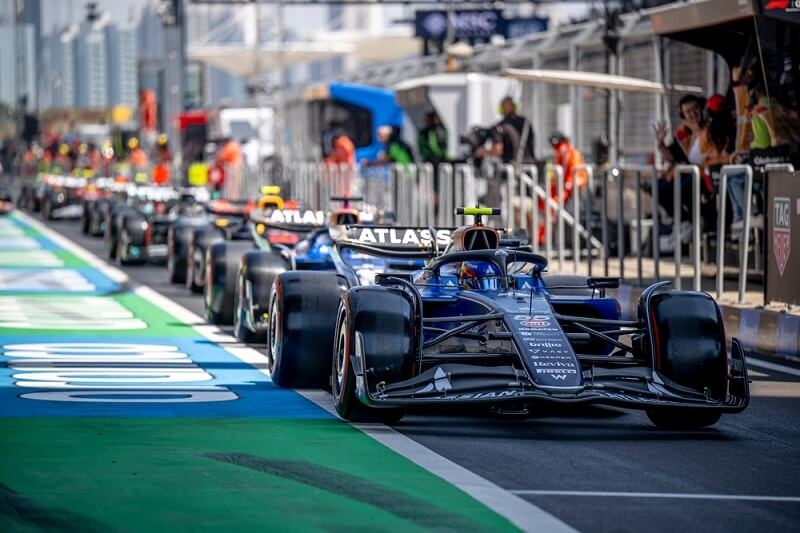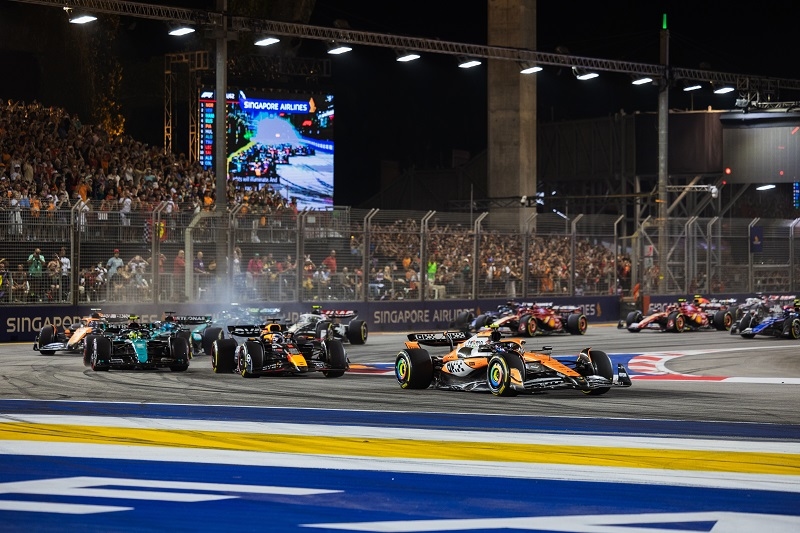F1 Las Vegas Grand Prix Traffic Flow Plan Revealed

Image: reviewjournal.com
The much-anticipated F1 Las Vegas Grand Prix 2023 from November 16-18 is not just about the revving of engines and the thrill of racing. With a city that is already a global hotspot for tourists and events, accommodating one of the largest racing events in the world requires a solid traffic management plan. As the details of the plan get unveiled, let's delve deep into how Las Vegas is preparing to host this grand event while ensuring minimal disruptions for its residents and visitors.
Denis Cederburg, director of public works with Clark County, said, Koval Lane north of Rochelle will be one lane in each direction, which will provide access to the businesses on the east side of Koval Lanes. If there is an opportunity to get into the intersection while its still green or yellow, theyll (drivers) get in the intersection even when theres no place to go, and theyll block the other direction from entering the intersection. So it is a problem. What happens there because of a number of barrier rails, metal curbs, light stanchions, and such, is that it is impractical to allow the east-west movement, move the barriers, and move everything in order to provide that. So, during warm track at Harmon Avenue and Las Vegas Boulevard, there will be no east-west movements. To make sure all the signaling and communications work prior to the race. The second night is a practice. The third night is qualifying, and the fourth night will be the race event itself.
Cold Track Operations
Koval, during its "cold" phase, will display two lanes in either direction, north of Flamingo, according to Cederburg. Sands will have two continuous lanes each way with an additional westbound turn lane. For Las Vegas Boulevard, the southbound direction will contain two main lanes plus a turn lane, while the northbound Strip will flaunt three main lanes. Cederburg highlights a 25% lane cutback at the Las Vegas Boulevard and Spring Mountain intersection. Clark County Commissioner Tick Segerblom emphasized concerns over traffic signal timings at this junction, mainly due to ongoing construction. Similarly, intersections at Flamingo and Harmon with Las Vegas Boulevard will experience a 25% lane cut during this phase.
Warm Track Adjustments
From Nov. 15 to Nov. 19, the track's status transitions to "warm", marking the commencement of race week with no cars on track. The most noticeable change in this phase will manifest at the Las Vegas Boulevard and Harmon intersection.
Hot Track Restrictions
During the "hot" phase, when racers occupy the track for the event's rounds, the entire course will be inaccessible to regular traffic. An exception exists with the Flamingo Bridge over Koval, which remains open, granting entry to the race course's core. This "hot" status will be in effect from 5 p.m. to 5 a.m., spanning Nov. 15 to Nov. 19. Even though the actual race rounds are slotted for Nov. 16-18, Nov. 15 will also be categorized as "hot" to facilitate pre-race trials. The traffic blueprint's finalization awaits approval of the special event permit that race authorities have applied for, states Cederburg.
Background and Context
Las Vegas, colloquially known as the "Entertainment Capital of the World", is no stranger to hosting large-scale events. But the F1 Grand Prix brings with it a unique set of challenges. The influx of fans, the logistical requirements of the teams, and the city's day-to-day hustle make it imperative to create a robust traffic plan that keeps the city functional while giving attendees an experience to remember. At present, the eastside intersection has been closed for a huge F1 bridge installation. Las Vegass approach to managing traffic during the Grand Prix weekend is comprehensive. The plan doesnt solely focus on the main race day but encompasses the entire race weekend, right from the practice sessions to the final lap.
Expanded Public Transportation: Recognizing the need to reduce individual vehicles, there's a notable expansion in public transportation. Shuttle services connecting pivotal points like McCarran International Airport, major hotels, and other tourist attractions to the racetrack will be operational, aiming to transport fans efficiently.
Park and Ride: To further alleviate road congestion, the city is introducing several park and ride locations. Fans can conveniently park their vehicles at these spots and hop onto shuttles, dramatically reducing the volume of traffic near the racing circuit.
Incorporating Technology for Real-time Management
Today, technology plays a pivotal role in any major event management, and the F1 Las Vegas Grand Prix is no exception. An intelligent traffic management system equipped with real-time data analytics will monitor and manage traffic flow, dynamically adapting signal timings to alleviate congestion as and when needed. Furthermore, a dedicated mobile app will be at the fingertips of attendees, providing real-time updates on routes, parking availability, and public transportation schedules. With all the excitement surrounding the Grand Prix, the daily lives of Las Vegas residents remain a priority. The plan goes beyond the needs of the event to ensure minimal disruptions for the city dwellers.
Alternate Routes: Comprehensive signages will guide non-event traffic through alternate pathways, making sure the regular movements of residents and other visitors arent hindered.
Noise Management: Given the nature of F1 races, noise is inevitable. But with strategically placed noise barriers, the city aims to minimize disturbances, especially during the initial practice and qualifying rounds.
Consistent Communication: Through various mediums, Las Vegas residents will be kept in the loop with regular updates about the traffic situations. This transparency allows them to plan their commutes and activities better.
Championing Sustainable Mobility
As Formula 1 steers towards sustainability with its future plans, so does the traffic flow strategy for the Las Vegas Grand Prix. Attendees are encouraged to opt for public transportation or carpooling. Additionally, the inclusion of electric shuttles in the transportation fleet and provisions for bicycle parking zones amplify the city's commitment to greener transportation methods. The sheer scale of the event warrants robust emergency response mechanisms. The traffic plan ensures pathways for ambulances and emergency services remain unobstructed throughout. Quick response routes have been meticulously charted out, ensuring timely help in the face of any emergencies at or near the racetrack. Vehicular bridges have been built to reduce traffic.
The Collaborative Effort
What stands out about the F1 Las Vegas Grand Prix 2023's traffic flow plan is the evident collaborative effort between various city departments, event organizers, and local businesses. It's not just about moving vehicles; it's about delivering an unforgettable experience while ensuring the safety and comfort of both residents and visitors.
Local Business Involvement: Las Vegas thrives on its businesses, especially the hospitality and entertainment sectors. Many local establishments are collaborating with event organizers, offering special deals and packages tied with shuttle services. This not only boosts local commerce but also aids in spreading out the flow of attendees.
Feedback Channels: To continuously improve the traffic system over the race weekend, feedback channels will be made accessible via the dedicated app. Attendees and residents can report any major congestion or suggest alternate routes, ensuring a dynamic response to emerging traffic challenges.
Looking Ahead
The F1 Las Vegas Grand Prix 2023 is setting the stage for a grand spectacle, both on and off the racetrack. As the city gears up to be a part of the F1 calendar, meticulous planning ensures that the experience remains memorable for all the right reasons. Fans can look forward to not just the exhilaration from the race, but also the seamless experience of being in one of the world's most vibrant cities during such a pivotal event. The traffic flow plan, in its essence, captures Las Vegas's commitment to ensuring the Grand Prix is remembered for its brilliance and not its bottlenecks. The strategies and systems being put in place for the F1 Las Vegas Grand Prix 2023 are not just for a one-off event. The infrastructure, technology, and protocols will serve as a blueprint for future large-scale events in Las Vegas. The investments made now pave the way for smarter, more efficient traffic management systems in the years to come.
This content was created by AI




